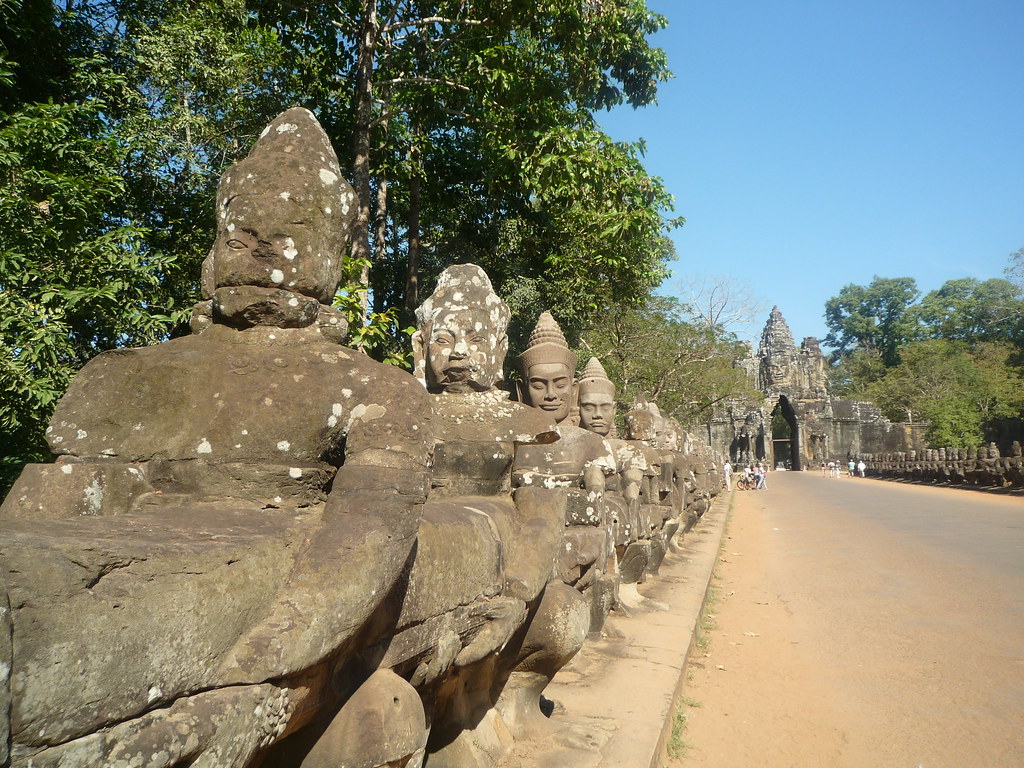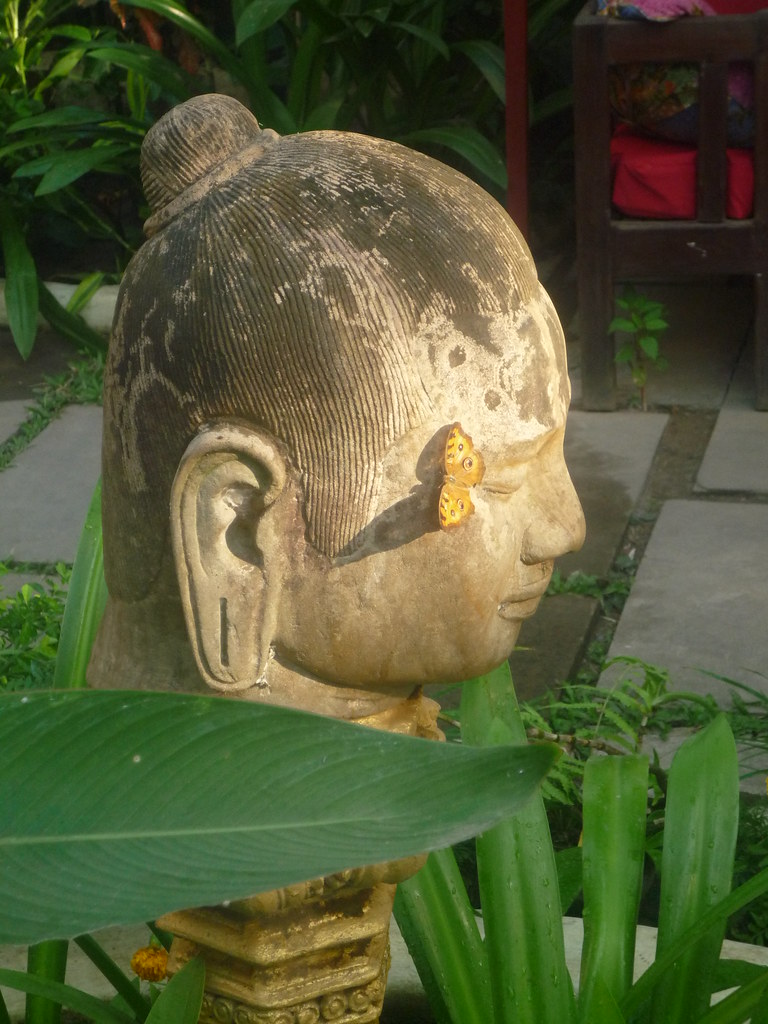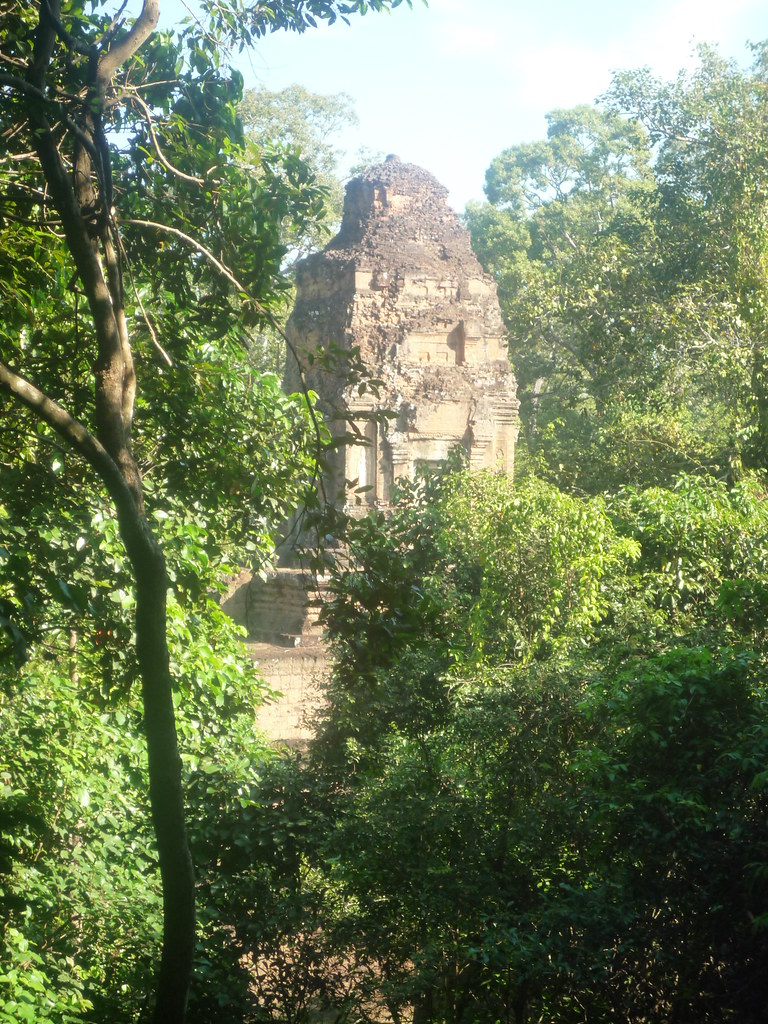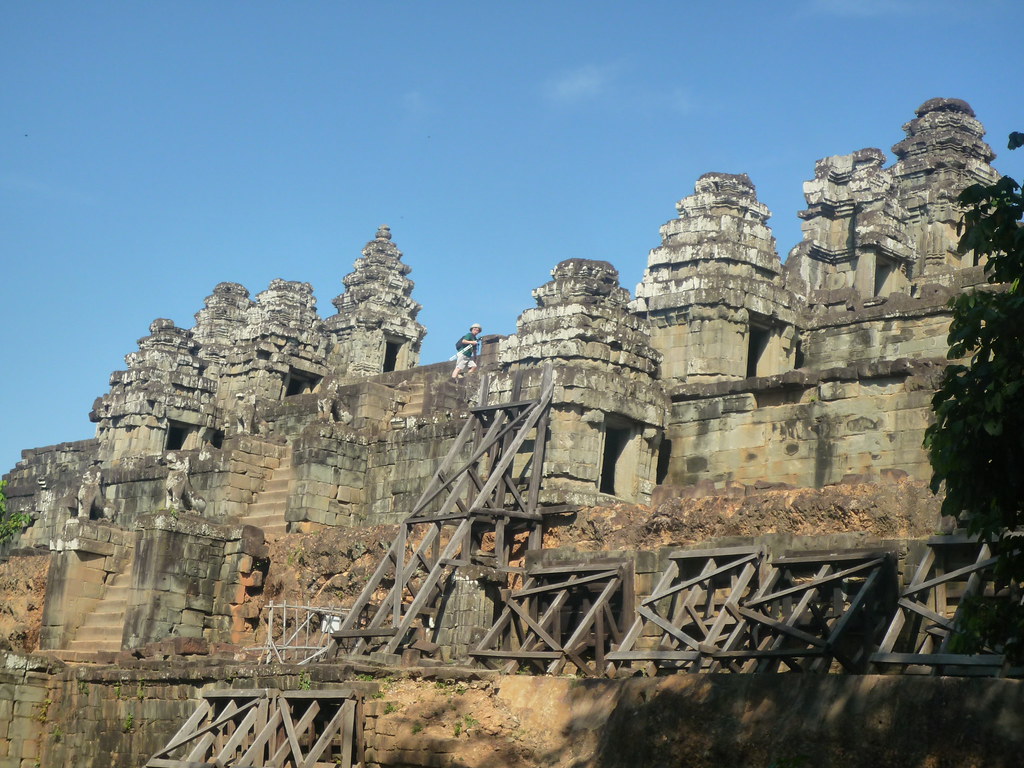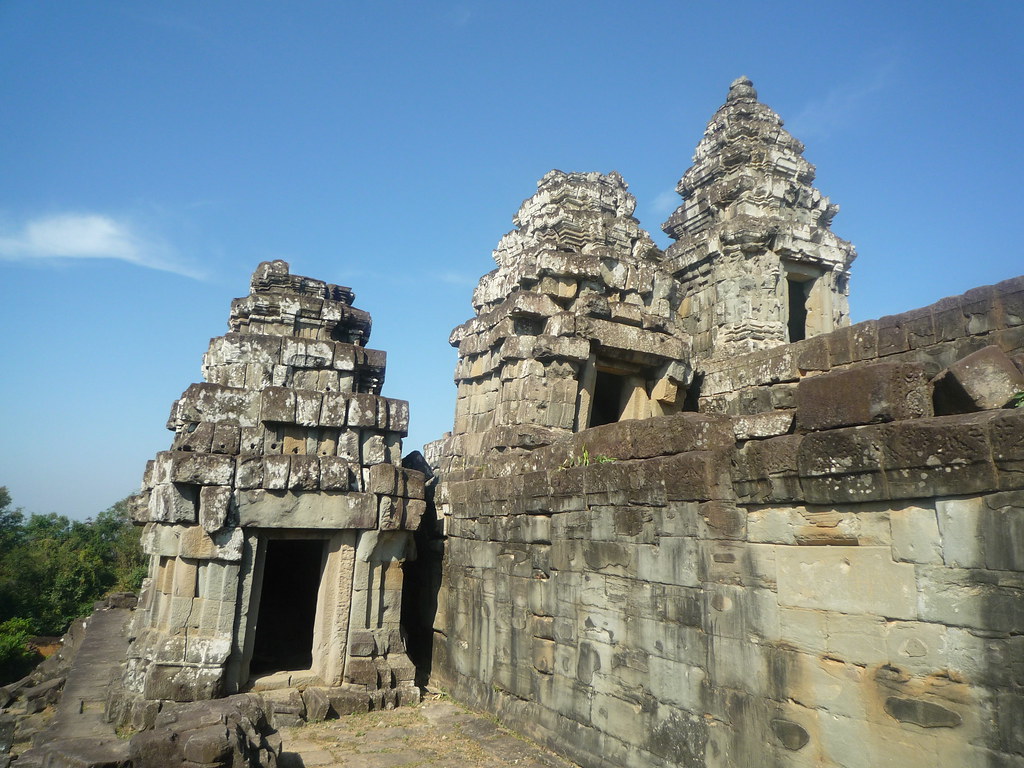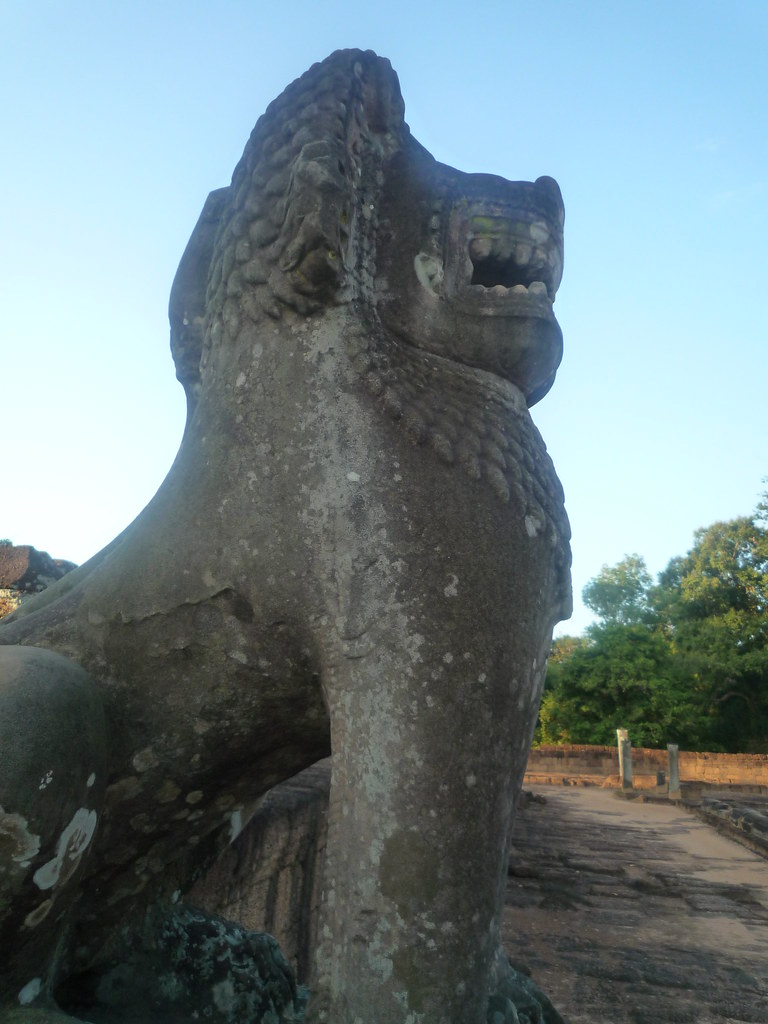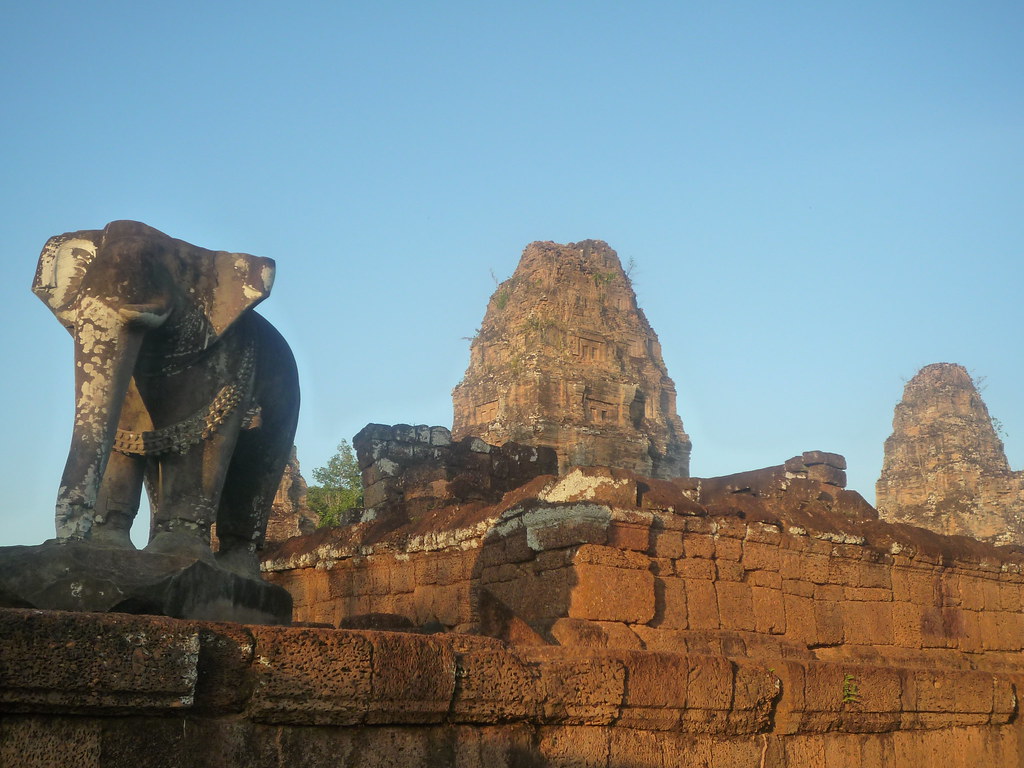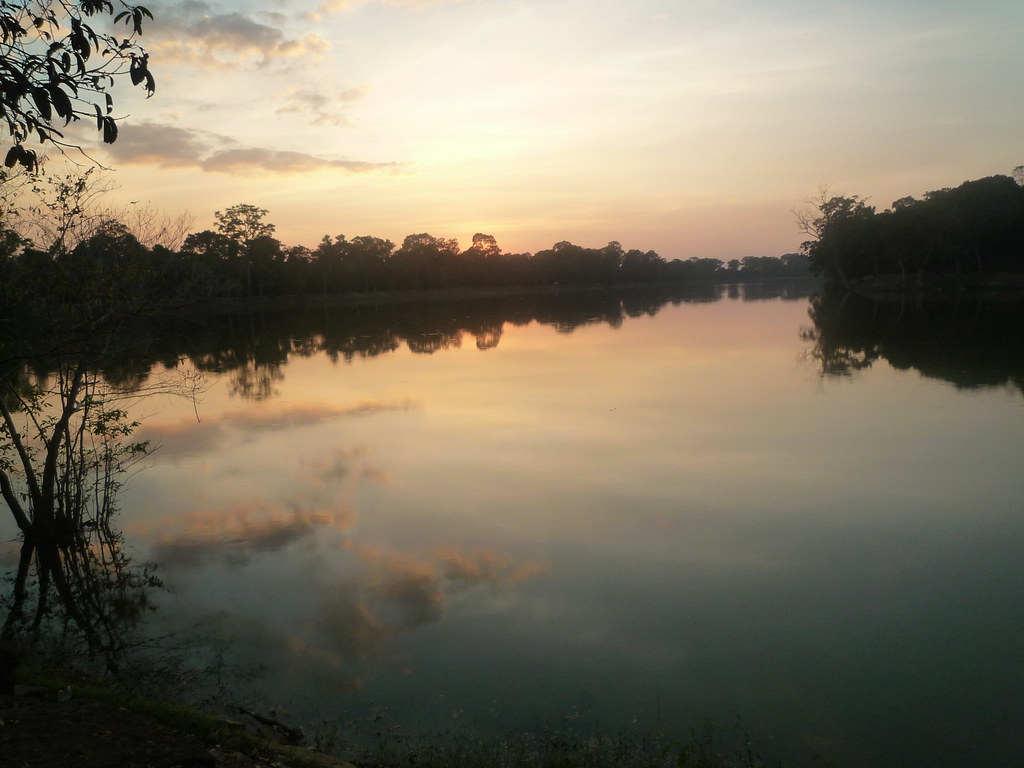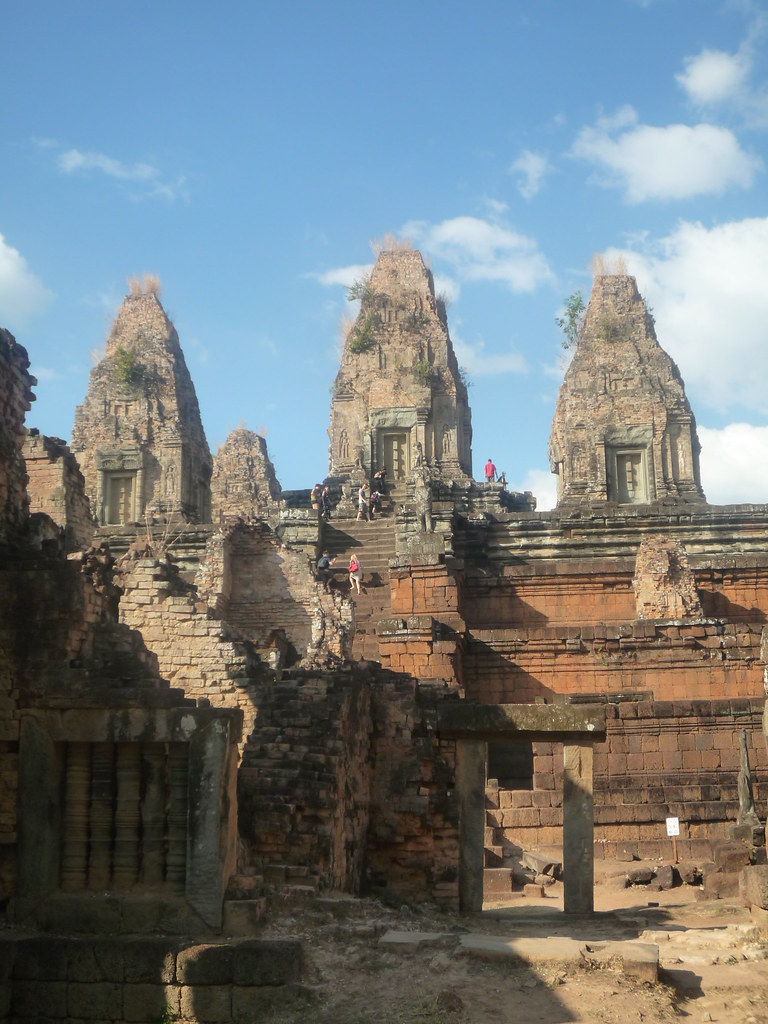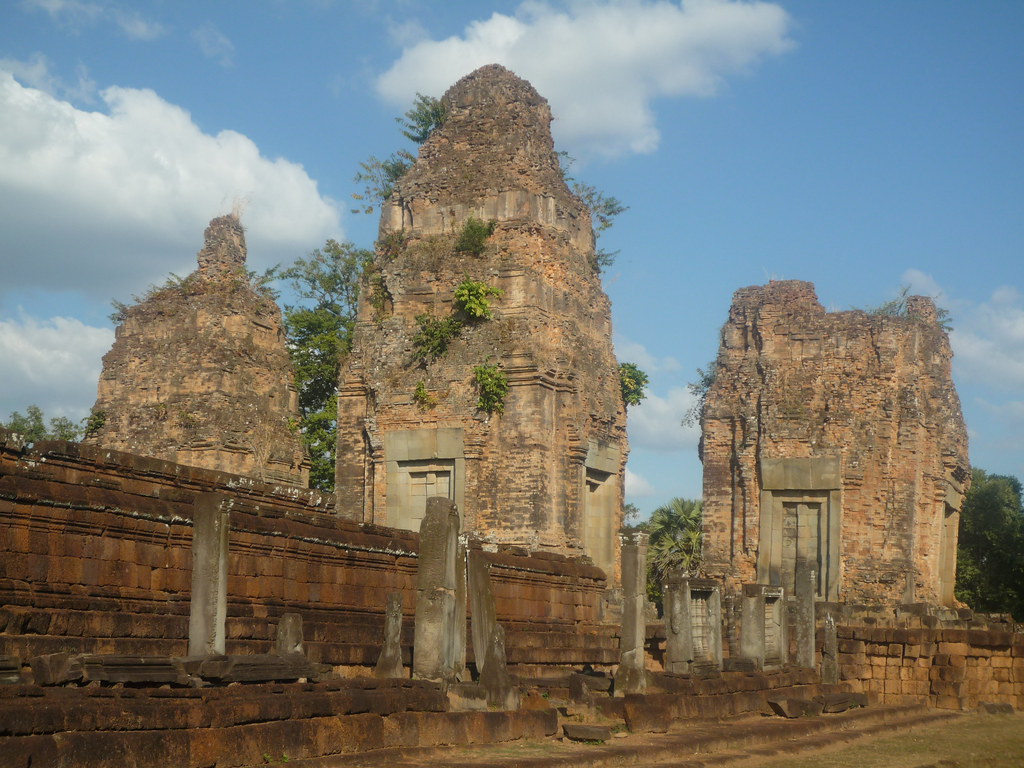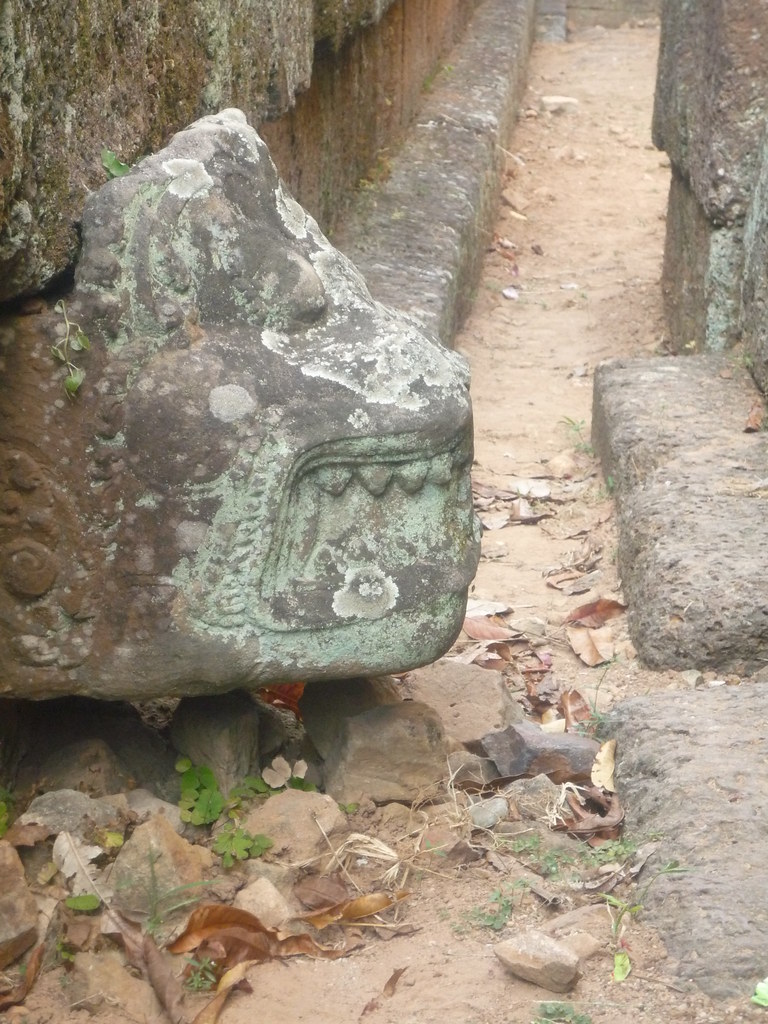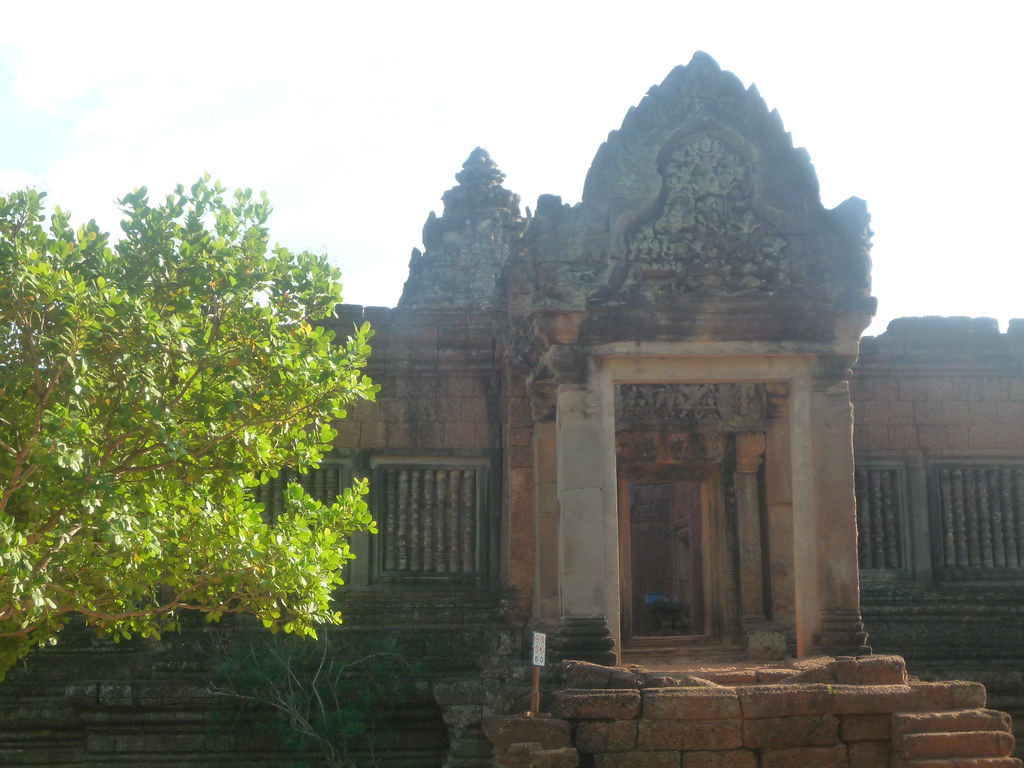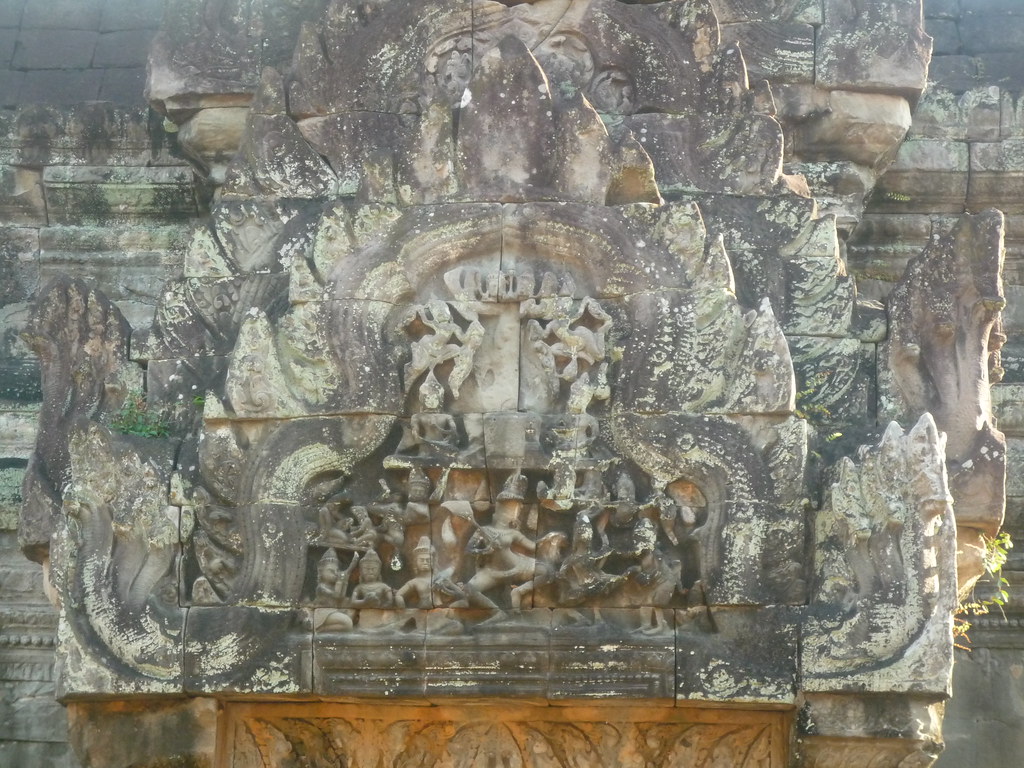I passed by a small cluster of restaurants - the only non ancient structures around - and biked a couple more kilometers up the road to Pre Rup.
I know this is a strange thing to say considering I had earlier visited literally the largest religious structure in the world, but Pre Rup temple was my favorite visit of that day.
Most Khmer temples symbolized holy mountains, yet Pre Rup truly had the towering height about the jungle to make the walk up its many steps feel like climbing to a summit.
I love when ancient buildings are in that perfect mix of ruined and intact. The decay of stone is powerful testament to both their incredible age and the ravages of time and weather, yet it is also easy to imagine what the structure would have looked like when new.
I admired the tenacity of the plants that had managed to get a root-hold onto the gaps in the brick towers.
Some hollow structures were many stories tall, and their interiors were far less damaged than their jungle and rain ravaged surfaces.
(It's too hot in Cambodia to hang out in the sun, even if it would have made for a better selfie.)
From the towering highest platform other temple islands were visible across a sea of jungle.
After traversing back down, I took in the whole temple, which was quite expansive. Only in the Angkor area could such a magnificent and colossal ruin barely be mentioned in guide books.
Even the gutters were full of mythical beasts.
I took a four kilometer each way detour to see Banteay Samre. Along the way I finally saw some water buffalo close up.
I think the most remarkable thing about Banteay Samre was the intact state of all of the detailed little carvings. The temple had more ornamentation even than the average Khmer temple, and most of the tiny figures and complex geometric patterns were able to survive clearly.
A beautiful Spanish family happened to visit the temple at the same time as me, and we took each others' pictures at the temple.
A couple dragon-like figures reminded me of the Chinese Taotie pattern. There is
unambiguous record of trade between the Khmer and China about a century after the Angkor temples' creation, and perhaps Chinese bronzes or the like bearing such symbols made their way to the Khmer kingdoms earlier. Or perhaps the similarity of imagery is coincidental.
Most of the other decorations shared the mix of Hindu influenced and regional Khmer iconography.


